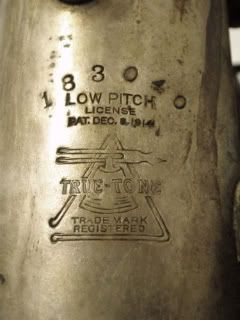| Advertisement |  |
Click to advertise with us! |
You are using an out of date browser. It may not display this or other websites correctly.
You should upgrade or use an alternative browser.
You should upgrade or use an alternative browser.
Unusual True Tone Neck
- Thread starter jbtsax
- Start date
I would guess that someone just made it to fix a problem of playing too sharp. It certainly screws up the "cone" as it's a cylindrical tube extension. I've seen permanent extensions made before.
Is it adjustable in front of the octave pip and/or near the mpc ?
Is it adjustable in front of the octave pip and/or near the mpc ?
Now that's just weird. What do you imagine the screw at the cork for???
it looks like the "stopper" of how far you push the tube into the neck (but does not stop it from being pulled out).
If that is correct, then the cyclindrical tube can go quite far into the cone of the neck ... i wonder what that horn sounds like ?
and, the octave pip could have been shortened to accommodate the pipe going thru .. hmmmm ... the octave pip could be before the pipe opening ? Wow, I really wonder how that works now !!
I wonder if that is neck damage to the side walls of the neck after the octave key guide from that pipe being pushed in too many times ?
Looks to me as if the cylindrical part is fixed (soldered) at the end of the cone. The screw clamp at the cork is for locking the second, telescoping cylindrical tube (to which the cork is attached), which fits inside the first. In this picture, the cork tube is pushed all the way in. This design causes as many problems as it cures.
Looks to me as if the cylindrical part is fixed (soldered) at the end of the cone. The screw clamp at the cork is for locking the second, telescoping cylindrical tube (to which the cork is attached), which fits inside the first. In this picture, the cork tube is pushed all the way in. This design causes as many problems as it cures.
That's what I was initially thinking.
But looking at the picture it looks as though the tube opening is the same width as the back part of the tube.
And looking at the tube near the neck, it looks as if it was pulled out a bit from the "dirty part", then I saw the inconsistencies in the neck area.
A better picture(s) would certainly be helpful ...
John, do you have the ebay item # ?
or a link ?
Sure Steve. Here is the eBay link: http://www.ebay.com/itm/120828262165?ssPageName=STRK:MEWAX:IT&_trksid=p3984.m1438.l2649
I have written to the seller asking for pictures of the neck with the corked part removed, and he wrote back asking for my email so he could send them to me. I will keep everyone posted.
That's what I was initially thinking.
But looking at the picture it looks as though the tube opening is the same width as the back part of the tube.
And looking at the tube near the neck, it looks as if it was pulled out a bit from the "dirty part", then I saw the inconsistencies in the neck area.
A better picture(s) would certainly be helpful ...
I imagine they would make the telescoping section as thin-walled as possible to avoid a big diameter step, and the cork end thicker for structural reasons. The inside bore would remain the same.
well just have to wait to see more pictures ...I imagine they would make the telescoping section as thin-walled as possible to avoid a big diameter step, and the cork end thicker for structural reasons. The inside bore would remain the same.
Sure Steve. Here is the eBay link: http://www.ebay.com/itm/120828262165?ssPageName=STRK:MEWAX:IT&_trksid=p3984.m1438.l2649
I have written to the seller asking for pictures of the neck with the corked part removed, and he wrote back asking for my email so he could send them to me. I will keep everyone posted.
ask the seller which part telescopes too ... inquiring minds want to know
I have seen variations on this style of "microtuner" neck on a variety of horns -- some Conn stencils, some Holtons, Pierrets, etc. -- but this one doesn't look at all original and I've not seen any Bueschers that have any form of a microtuner neck.
I agree with the supposition that a past owner used a mouthpiece that made him sound too sharp, so he decided to try out his 1337 soldering skillz.
I agree with the supposition that a past owner used a mouthpiece that made him sound too sharp, so he decided to try out his 1337 soldering skillz.
Here are the pics the seller sent to me. I may be going out on a limb here, but this does not look like a do-it-yourself project to me. Look at the finish and shape of ring next to the octave pip, and the collar with the tightening screw. These look to me as if they were factory produced.
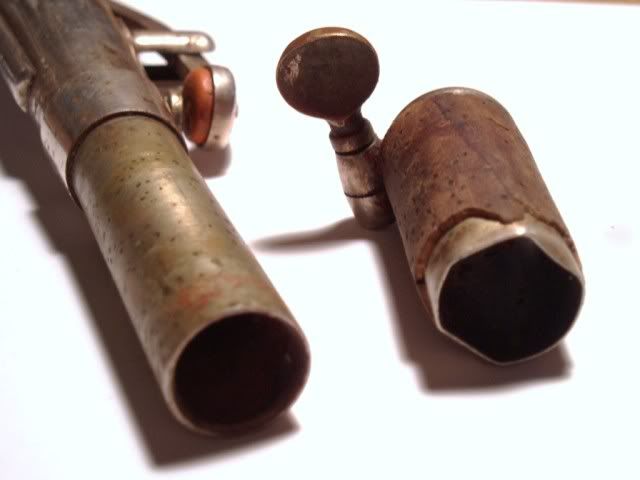
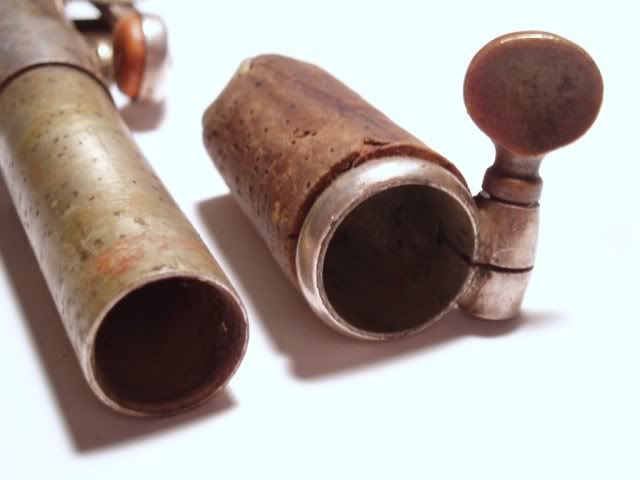
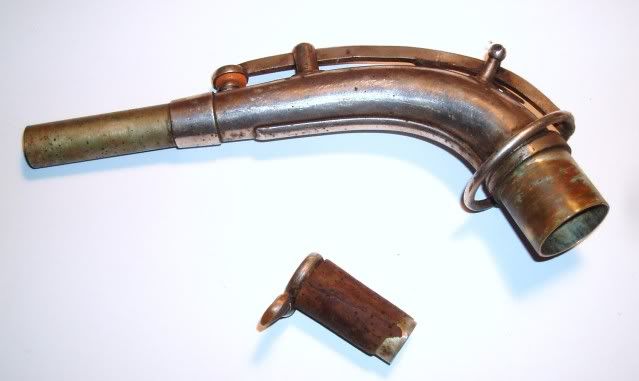
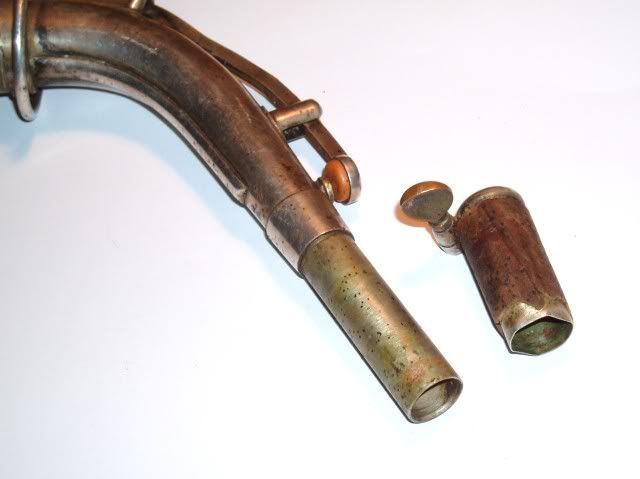




I was given a tip in an email from Henry Duran that this is the neck to a Holton Wiedhoft model.
http://www.saxpics.com/?v=gal&a=5166
http://www.saxpics.com/?v=gal&a=5166
I win the thread!I have seen variations on this style of "microtuner" neck on a variety of horns -- some Conn stencils, some Holtons, Pierrets, etc. -- but this one doesn't look at all original and I've not seen any Bueschers that have any form of a microtuner neck.
I agree with the supposition that a past owner used a mouthpiece that made him sound too sharp, so he decided to try out his 1337 soldering skillz.
Found this same neck on an eBay auction of a Rudy Weidorft model, but in much better condition.
http://www.ebay.com/itm/Holton-Alto...ultDomain_0&hash=item2a176c1e28#ht_500wt_1033
http://www.ebay.com/itm/Holton-Alto...ultDomain_0&hash=item2a176c1e28#ht_500wt_1033


